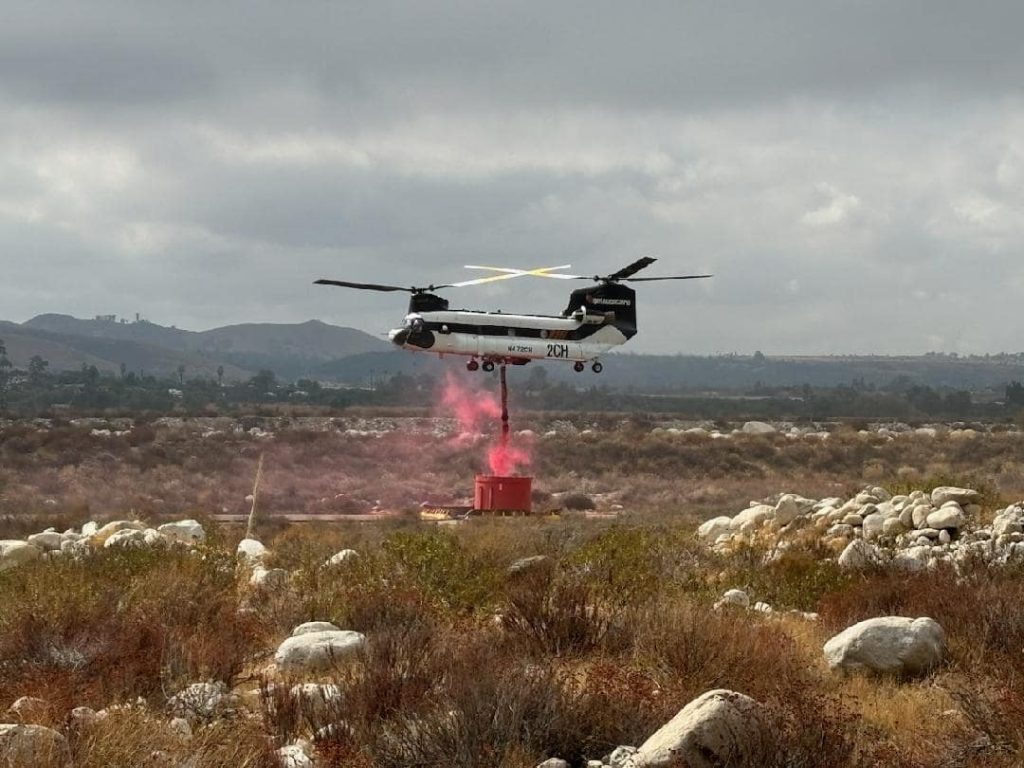Water & Fire
Impacts of Fire on Groundwater
Fire is always a threat in Southern California – not just to the San Bernardino Mountains, Upper Santa Ana River Wash, and Bunker Hill Basin, but to our communities, our air quality, and our water supply.
Despite the benefits of fire to the landscape [see below], post-wildfire stormwater in San Bernardino County’s Upper Santa Ana River Wash can limit the district’s ability to cost-effectively recharge groundwater.
The district’s long-term monitoring programs for endangered species such as the San Bernardino kangaroo rat will inform fire prevention and restoration efforts across our region. This project represents a major investment with regards to local conservation efforts and community partnerships, as well as supporting our groundwater recharge work.
Thanks to a grant from the Bureau of Land Management, the San Bernardino Valley Conservation District is using a fire-wise mitigation approach to improve conditions for the local flora and fauna, including listed endangered species. This strategy includes wildfire risk reduction measures such as hazardous fuels management and ignition risk reduction.
Partnerships are the Key
Through the decades we have learned that the best approach to managing water and mitigating fire is a network of trusted partnerships. Because of these strong relationships, we can continue maximizing groundwater recharge during and after fires while limiting maintenance costs and assisting local firefighting efforts.
For example, during the 2024 Line Fire, the district worked with regional partners to support efforts to maintain water deliveries while also supporting firefighting efforts. The plan ensured that water unfit for treatment (ex. contaminated with fire debris runoff) could instead be diverted to CalFire helicopter operators to use in nearby fire-drops.
While no natural disaster is completely preventable, working together we can help mitigate the risks to the Upper Santa Ana River Wash and neighboring communities. The district is collaborating with other water districts, as well as the US Geological Survey, US Fish and Wildlife, and Bureau of Land Management to help us remain vigilant in our efforts to protect the natural resources – including our water supply – that we dearly depend upon.

Water & Fire in Southern California
Wildfire is part of the ecology of the San Bernardino Mountains and San Bernardino Valley. It plays an important role in recycling nutrients back into the soil and regenerating fire-adapted plant species such as chaparral and pine trees.
In Southern California, rainfall also plays a crucial role, impacting both the frequency and severity of wildfires. Rain helps suppress fire ignition in the short term by increasing soil moisture and reducing immediate fire risk. Precipitation also replenishes our local groundwater and supports native habitat.
However, the growth of invasive plant species that follows seasonal rains can become highly flammable during the dry summer and fall months. When we experience drought or limited precipitation, this non-native vegetation dries out more quickly than local species and the landscape becomes more vulnerable to ignition. As we have seen in recent years, these conditions can prolong the fire season and set the stage for potentially larger and more intense wildfires as the landscape dries out. This is especially true when combined with strong seasonal gusts such the Santa Ana winds.
